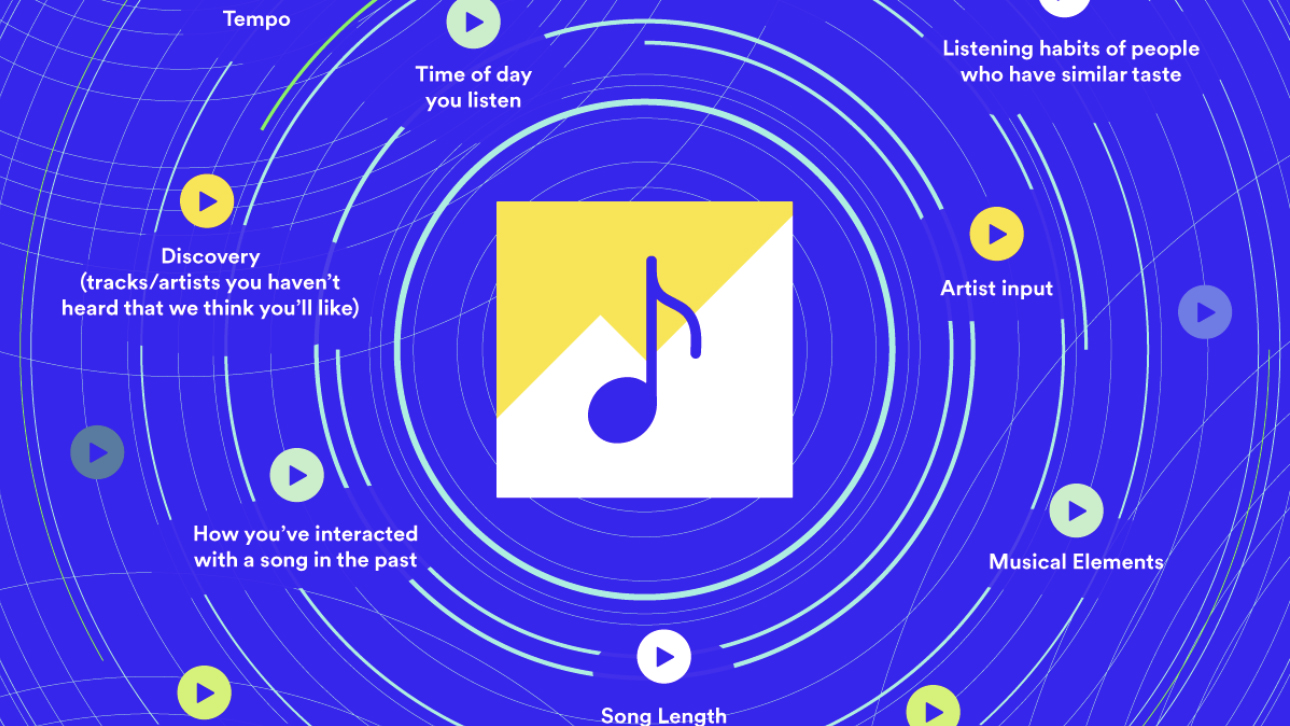Spotify tests new artist-led algorithm to better personalise your music recommendations
An option for artists to influence the Spotify algorithm (but at a cost)

Ever wondered how Spotify really comes up with your recommended Discover Weekly music? Of course, it's an algorithm based on the listening habits of other people – a classic example being that if you like R.E.M., Spotify will suggest Dinosaur Jr. or alt-J, because it knows that many R.E.M. listeners also listen to those artists. (We're just the messengers here.)
Now, Spotify is rolling out a test that will allow the artists themselves, and their labels, the chance to get involved in how their music is discovered.
In this new experiment, artists and labels can identify music that’s a priority for them, and Spotify's system will add that signal to the algorithm that determines personalised listening sessions. This allows the algorithms to account for what’s important to the artist – a song they’re particularly excited about perhaps, or an album anniversary they’re celebrating.
To ensure that the tool is accessible to artists at any stage of their careers, Spotify says it won’t require any upfront budget either. Instead, labels or rights holders will have to agree to be paid a "promotional recording royalty rate" for streams in personalised listening sessions where Spotify provided this service. In other words, a reduced rate in order to enjoy the benefit of being pushed into more streams.
If the songs resonate with listeners, Spotify will keep trying them in similar sessions – which should then mean more royalties to the artists. If the songs don’t perform well, they’ll simply be pulled back in a timely fashion.
According to the largest subscription music streaming service of them all, Spotify drives 16 billion artist discoveries every month. That means that 16 billion times a month, music fans listen to an artist they have never heard before on Spotify. In an effort to please its loyal customer base (many of whom may well still be spending a lot of time at home) the firm is actively refining its algorithms to enable even more discoveries of new artists each month.
To drill down into this a little more, Spotify currently makes personalised recommendations using complex, dynamic systems that consider a wide variety of inputs about what you like – which the industry refers to as signals – and it balances those signals in many possible different pathways to produce an output: i.e. its best possible guess at the ideal song for you, at that moment.
Get the What Hi-Fi? Newsletter
The latest hi-fi, home cinema and tech news, reviews, buying advice and deals, direct to your inbox.
If this sounds complicated, that's because it is. Personalising your music takes into account thousands of types of signals: what you’re listening to and when, which songs you’re adding to playlists, the listening habits of people who have similar tastes, and much more – yes, Spotify is watching you. And in order to create algorithms that truly deliver the right song for you at the right time, it is also taking into account less obvious factors: time of day, order in which you’re listening to songs, the release date of a song – it's all relevant.
Enter then, the artists. Acts want more opportunities to connect with new listeners, and Spotify hopes this test will allow artists and labels to have more of an influence on the algorithm, and in turn on the music we end up listening to.
Spotify is quick to emphasise that listener satisfaction remains its priority – the company won’t guarantee placement to labels or artists, and will only ever recommend music it genuinely thinks listeners will want to hear.
To start with, Spotify will focus on applying this service to its Radio and Autoplay formats, where it's highly likely that listeners are looking to discover new music. As the streaming outfit learns from the experiment, Spotify says it will carefully test expanding the scheme to other personalised areas of Spotify.
At a time when most bands are still unable to guarantee live performances in front of an actual paying crowd to cover the bills, this might at least give them another way to reach an audience.
MORE:
Check out 11 of the best Spotify playlists to listen to right now
Read up on the best music streaming services from free to premium services
UK MPs to investigate music streaming services and how much artists are paid
What Hi-Fi?, founded in 1976, is the world's leading independent guide to buying and owning hi-fi and home entertainment products. Our comprehensive tests help you buy the very best for your money, with our advice sections giving you step-by-step information on how to get even more from your music and movies. Everything is tested by our dedicated team of in-house reviewers in our custom-built test rooms in London, Reading and Bath. Our coveted five-star rating and Awards are recognised all over the world as the ultimate seal of approval, so you can buy with absolute confidence.

